Kawasaki Z800 ABS 2015 Owner's manual

Quick Reference Guide
This Quick Reference Guide will assist you in finding the information you’re looking for.
SAFETY INFORMATION |
j |
|
|
GENERAL INFORMATION |
j |
|
|
HOW TO RIDE THE MOTORCYCLE |
j |
|
|
MAINTENANCE AND ADJUSTMENT |
j |
|
|
APPENDIX |
j |
|
|
MAINTENANCE RECORD |
j |
A Table of Contents is included after the Foreword.
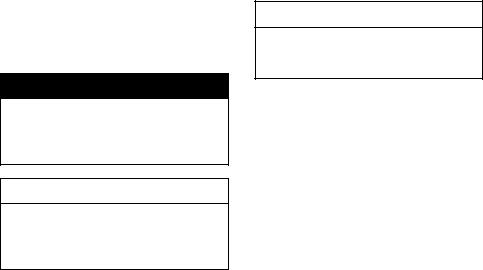
Whenever you see the symbols shown below, heed their instructions! Always follow safe operating and maintenance practices.
 DANGER
DANGER
DANGER indicates a hazardous situation which, if not avoided, will result in death or serious injury.
 WARNING
WARNING
WARNING indicates a hazardous situation which, if not avoided, could result in death or serious injury.
NOTICE
NOTICE is used to address practices not related to personal injury.
NOTE
○NOTE indicates information that may help or guide you in the operation or service of the vehicle.

NOTICE
THIS PRODUCT HAS BEEN MANUFACTURED FOR USE IN A REASONABLE AND PRUDENT MANNER BY A QUALIFIED OPERATOR AND AS A VEHICLE ONLY.

Foreword
Congratulations on your purchase of a new Kawasaki motorcycle. Your new motorcycle is the product of Kawasaki’s advanced engineering, exhaustive testing, and continuous striving for superior reliability, safety and performance.
Please read this Owner’s Manual carefully before riding so that you will be thoroughly familiar with the proper operation of your motorcycle’s controls, its features, capabilities, and limitations. This manual offers many safe riding tips, but its purpose is not to provide instruction in all the techniques and skills required to ride a motorcycle safely. Kawasaki strongly recommends that all operators of this vehicle enroll in a motorcycle rider training program to attain awareness of the mental and physical requirements necessary for safe motorcycle operation.
To ensure a long, trouble-free life for your motorcycle, give it the proper care and maintenance described in this manual. For those who would like more detailed information on their Kawasaki Motorcycle, a Service Manual is available for purchase from any authorized Kawasaki motorcycle dealer. The Service Manual contains detailed disassembly and maintenance information. Those who plan to do their own work should, of course, be competent mechanics and possess the special tools described in the Service Manual.
Keep this Owner’s Manual aboard your motorcycle at all times so that you can refer to it whenever you need information.
This manual should be considered a permanent part of the motorcycle and should remain with the motorcycle when it is sold.
All rights reserved. No part of this publication may be reproduced without our prior written permission.
This publication includes the latest information available at the time of printing. However, there may be minor differences between the actual product and illustrations and text in this manual.
All products are subject to change without prior notice or obligation.
KAWASAKI HEAVY INDUSTRIES, LTD.
Motorcycle & Engine Company
© 2014 Kawasaki Heavy Industries, Ltd. |
May 16, 2014. (1) |

(Australian model only)
TAMPERING WITH NOISE CONTROL SYSTEM
PROHIBITED
Owners are warned that the law may prohibit:
(a)The removal or rendering inoperative by any person other than for purposes of maintenance, repair or replacement, of any device or element of design incorporated into any new vehicle for the purpose of noise control prior to its sale or delivery to the ultimate purchaser or while it is in use; and
(b)The use of the vehicle after such device or element of design has been removed or rendered inoperative by any person.

TABLE OF CONTENTS
SAFETY INFORMATION .................... |
10 |
Read Owner’s Manual ..................... |
10 |
Training ............................................ |
10 |
Daily Checks and Periodic |
|
Maintenance ................................. |
10 |
Loading and Accessories |
|
Information.................................... |
11 |
Passenger .................................... |
12 |
Baggage and Luggage ................. |
13 |
Accessories .................................. |
13 |
Other Load.................................... |
14 |
If You are Involved in an Accident.... |
14 |
Safe Operation................................. |
15 |
Carbon Monoxide Hazard............. |
15 |
Fueling.......................................... |
16 |
Never Ride with Drugs or Alcohol. 16 |
|
Protective Gear and Clothing ....... |
16 |
Safe Riding Techniques................ |
17 |
Additional Considerations for High |
|
Speed Operation ....................... |
19 |
GENERAL INFORMATION................. |
21 |
Specifications................................... |
21 |
Serial Number Locations.................. |
25 |
Location of Labels............................ |
26 |
Location of Parts .............................. |
34 |
Meter Instruments ............................ |
37 |
Tachometer................................... |
38 |
Multifunction Meter (Right Side) ... |
40 |
Multifunction Meter (Left Side)...... |
47 |
Indicator Lights ............................. |
53 |
Warning Indicator Lights ............... |
54 |
Keys ................................................. |
57 |
Ignition Switch/Steering Lock........... |
60 |
Right Handlebar Switches................ |
61 |
Left Handlebar Switches .................. |
62 |
Brake Lever Adjuster........................ |
63 |
Fuel Tank Cap.................................. |
64 |
Fuel .................................................. |
65 |
Fuel Requirements ....................... |
65 |
Filling the Tank.............................. |
67 |
Side Stand ....................................... |
69 |
Seats................................................ |
70 |
Tying Hooks ..................................... |
74 |
Tool Kit ............................................. |
75 |
Rear View Mirror .............................. |
75 |
Event Data Recorder........................ |
77 |
HOW TO RIDE THE MOTORCYCLE . 79 |
|
Break-In ........................................... |
79 |
Starting the Engine .......................... |
80 |
Jump Starting................................... |
83 |
Moving Off........................................ |
85 |
Shifting Gears .................................. |
86 |
Braking............................................. |
87 |
Anti-lock Brake System (ABS) ......... |
88 |
Yellow ABS Indicator Light............ |
91 |
Stopping the Engine......................... |
91 |
Stopping the Motorcycle in an |
|
Emergency ................................... |
92 |
Parking............................................. |
93 |
MAINTENANCE AND ADJUSTMENT |
95 |
Daily Checks .................................... |
97 |
Periodic Maintenance....................... |
100 |
Engine Oil ........................................ |
105 |
Coolant............................................. |
109 |
Air Cleaner ....................................... |
118 |
Throttle Control System ................... |
119 |
Idle Speed........................................ |
121 |
Clutch............................................... |
122 |
Drive Chain ...................................... |
124 |
Brakes.............................................. |
128 |
Brake Light Switches........................ |
131 |
Suspension System ......................... |
132 |
Front Fork ..................................... |
132 |
Rear Shock Absorber ................... |
134 |
Setting Tables ............................... |
136 |
Wheels ............................................. |
139 |
Battery.............................................. |
142 |
Headlight.......................................... |
146 |
Fuses ............................................... |
148 |
General Lubrication.......................... |
149 |
Cleaning Your Motorcycle ................ |
151 |
General Precautions..................... |
151 |
Washing Your Motorcycle ............. |
152 |
APPENDIX .......................................... |
157 |
Storage ............................................ |
157 |
Troubleshooting Guide..................... |
160 |
Owner Satisfaction........................... |
161 |
MAINTENANCE RECORD ................. |
164 |
Environmental Protection................. |
163 |
|
|
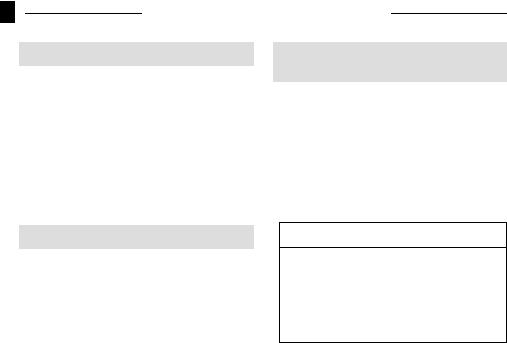
10 SAFETY INFORMATION
SAFETY INFORMATION
Read Owner’s Manual
Read this Owner’s Manual carefully before riding so that you will be thoroughly familiar with the proper operation of your motorcycle’s controls, its features, capabilities, and limitations. This manual offers many safe riding tips, but its purpose is not to provide instruction in all of the techniques and skills required to ride a motorcycle safely.
Daily Checks and Periodic
Maintenance
It is important to keep your motorcycle properly maintained and in safe riding condition. Inspect your motorcycle before every ride and carry out all periodic maintenance. See the Daily Checks section and the Periodic Maintenance section in the MAINTENANCE AND ADJUSTMENT chapter for more information.
Training
Kawasaki strongly recommends that all operators of this vehicle complete a suitable motorcycle rider training program to learn the proper skills and techniques necessary for safe motorcycle operation.
 WARNING
WARNING
Failure to perform these checks or to correct a problem before operation may result in serious damage or an accident. Always perform daily checks before operation.
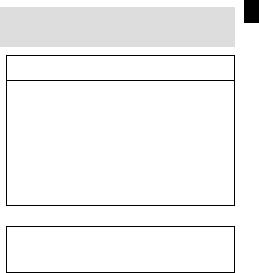
To ensure your motorcycle is serviced using the latest servicing information, it is recommended that an authorized Kawasaki Dealer performs the periodic maintenance as directed in the Owner’s Manual.
If you notice any irregular operating condition, have your motorcycle thoroughly checked at an authorized Kawasaki dealer as soon as possible.
SAFETY INFORMATION 11
Loading and Accessories
Information
 WARNING
WARNING
Incorrect loading, improper installation or use of accessories or modification of your motorcycle may result in an unsafe riding condition. Before you ride the motorcycle, make sure it is not overloaded and that you have followed these instructions.
Maximum Load
Weight of rider, passenger, baggage, and accessories must not exceed 180 kg (397 lb).
With the exception of genuine Kawasaki Parts and Accessories, Kawasaki has no control over the design or application of accessories. In some cases, improper installation

12 SAFETY INFORMATION
or use of accessories, or motorcycle modification, will void the motorcycle warranty; can negatively affect performance, stability and safety; and can even be illegal.
In selecting and using accessories, and in loading the motorcycle, you are personally responsible for your own safety and the safety of other persons involved.
NOTE
○Kawasaki Parts and Accessories have been specially designed for use on Kawasaki motorcycles. We strongly recommend that all parts and accessories you add to your motorcycle be genuine Kawasaki components.
Because a motorcycle is sensitive to changes in weight and aerodynamic forces, you must take extreme care in carrying cargo, passengers and/or in
fitting additional accessories. The following general guidelines have been prepared to assist you in making your determinations.
Passenger
1.Never carry more than one passenger.
2.The passenger should only sit on the pillion.
3.Any passenger should be thoroughly familiar with motorcycle operation. The passenger can affect control of the motorcycle by improper positioning during cornering and sudden movements. It is important that the passenger sits still while the motorcycle is in motion and not interfere with the operation of the motorcycle. Do not carry animals on your motorcycle.

4.Do not carry passengers unless passenger footpegs are installed. Instruct any passenger before riding to keep his or her feet on the passenger footpegs and hold on to the operator or seat strap. Do not carry a passenger unless he or she is tall enough to reach the footpegs with their feet.
Baggage and Luggage
1.All baggage should be carried as low as possible to reduce the effect on the motorcycle’s center of gravity. Baggage weight should also be distributed equally on both sides of the motorcycle. Avoid carrying baggage that extends beyond the rear of the motorcycle.
2.Baggage should be securely attached. Make sure that the baggage
SAFETY INFORMATION 13
will not move around while you are riding. Recheck baggage security as often as possible (not while the motorcycle is in motion) and adjust as necessary.
3.Do not carry heavy or bulky items on a luggage rack. It is designed for light items, and overloading can affect handling due to changes in weight distribution and aerodynamic forces.
Accessories
1.Do not install accessories or carry baggage that impairs the performance of the motorcycle. Make sure that you have not adversely affected any lighting components, road clearance, banking capability (i.e., lean angle), control operation, wheel travel, front fork movement,

14 SAFETY INFORMATION
or any other aspects of the motorcycle’s operation.
2.Weight attached to the handlebar or front fork will increase the mass of the steering assembly and can result in an unsafe riding condition.
3.Fairings, windshields, backrests, and other large items have the capability of adversely affecting stability and handling of the motorcycle, not only due to their weight, but also due to the aerodynamic force acting on these surfaces while the motorcycle is in operation. Poorly designed or installed items can result in an unsafe riding condition.
Other Load
1.This motorcycle is not intended to be equipped with a sidecar or to be
used to tow any trailers or other vehicles. Kawasaki does not manufacture sidecars or trailers for motorcycles and cannot predict the effects of such accessories on handling or stability, but can only warn that the effects can be adverse and that Kawasaki cannot assume responsibility for the results of such unintended use of the motorcycle.
2.Furthermore, any adverse effects on motorcycle components caused by the use of such accessories will not be remedied under warranty.
If You are Involved in an Accident
Make sure of your own safety first. Determine the severity of any injuries and call for emergency assistance if needed. Always follow applicable laws

and regulations if any other person, vehicle or property is involved.
Do not attempt to continue riding without first evaluating your motorcycle’s condition. Inspect for fluid leaks, check critical nuts and bolts, and check the handlebars, control levers, brakes, and wheels for damage and proper function. Ride slowly and cautiously - your motorcycle may have suffered damage that is not immediately apparent. Have your motorcycle thoroughly checked at a Kawasaki dealer as soon as possible.
Safe Operation
SAFETY INFORMATION 15
Carbon Monoxide Hazard
 DANGER
DANGER
Exhaust gas contains carbon monoxide, a colorless, odorless poisonous gas. Inhaling carbon monoxide can cause serious brain injury or death.
Do not run the engine in enclosed areas. Operate only in a well-ventilated area.
The following should be carefully observed for safe and effective vehicle operation.
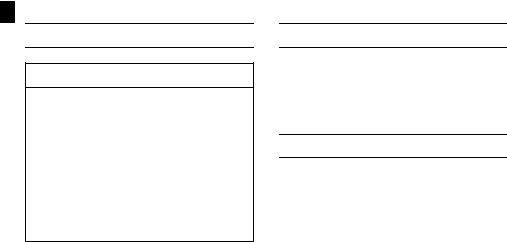
16 SAFETY INFORMATION
Fueling
 WARNING
WARNING
Gasoline is extremely flammable and can be explosive under certain conditions.
To avoid a possible fire or explosion, turn the ignition switch to “OFF.” Do not smoke. Make sure the area is well ventilated and free from any source of flame or sparks; this includes any appliance with a pilot light.
Never Ride with Drugs or Alcohol
Alcohol and drugs impair your judgment and reaction time. Never consume alcohol or drugs before or while riding motorcycles.
Protective Gear and Clothing
Helmet
Kawasaki strongly recommends both the operator and passenger wear a helmet even if this is not a legal requirement.
-Make sure that your helmet fits correctly and is properly fastened.
-Choose a motorcycle helmet that meets the safety standards applicable to your country. Ask your motorcycle dealer to advise you if necessary.

Eye Protection
Always use eye protection. If your helmet does not have a visor installed, wear goggles.
Gloves
Wear gloves which have suitable protection for your hands, especially against abrasion.
Clothing
Wear protective clothing.
-Wear bright, highly visible clothing that allows freedom of movement to suit your riding style.
-Always wear a longsleeved jacket and long trousers which are abrasion resistant and keep you warm.
-Avoid wearing clothes which have loose cuffs or other fastenings which could interfere with the controls of your motorcycle.
SAFETY INFORMATION 17
Boots
Wear proper protective boots that fit properly and do not interfere with gear shifting or braking.
Safe Riding Techniques
Keep Hands on Handlebars
When riding always keep both hands on the handlebars and both feet on the footpegs. Removing your hands from the handlebars or feet from the footpegs while riding can be hazardous. If you remove even one hand or foot, you reduce your ability to control the motorcycle.
Look Over Your Shoulder
Before changing lanes, look over your shoulder to make sure the way is clear. Do not rely solely on the rear

18 SAFETY INFORMATION
view mirror; you may misjudge a vehicle’s distance and speed, or you may not see it at all.
Accelerate and Brake Smoothly
In general your actions should be smooth as sudden acceleration, braking or turning may cause loss of control, especially when riding in wet conditions or on loose road surfaces, when the ability to maneuver will be reduced.
Select Correct Gear Speeds
When going up steep slopes, shift to a lower gear so that there is power to spare rather than overloading the engine.
Use Both Front and Rear Brakes
When applying the brakes, use both the front and rear brakes. Applying only one brake for sudden braking may cause the motorcycle to skid and lose control.
Use Engine Brake
When going down long slopes, help control vehicle speed by closing the throttle so that the engine can act as an auxiliary brake. Use the front and rear brakes for primary braking.
Riding in Wet Conditions
Rely more on the throttle to control vehicle speed and less on the front and rear brakes. The throttle should also be used judiciously to avoid skidding the rear wheel from too rapid acceleration or deceleration.
Braking performance is also reduced in wet conditions. Carefully ride at a slow speed and apply the brakes several times to help dry and restores them to normal operating performance.
Lubricate the drive chain after wet -weather riding to prevent rust and corrosion.
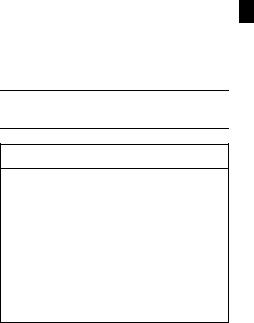
Ride Prudently
Riding at the proper speed and avoiding unnecessarily fast acceleration are important not only for safety and low fuel consumption but also for long vehicle life and quieter operation.
Riding on Rough Roads
Exercise caution, slow down, and grip the fuel tank with the knees for better stability.
Acceleration
When quick acceleration is necessary to pass another vehicle, shift to a lower gear to obtain the necessary power.
Downshifting
To avoid engine damage and rear -wheel lock-up do not downshift at high rpm.
SAFETY INFORMATION 19
Avoid Unnecessary Weaving
Unnecessary weaving jeopardizes the safety of both the rider and other motorists.
Additional Considerations for High Speed Operation
 WARNING
WARNING
Handling characteristics of a motorcycle at high speeds may vary from those you are familiar with at legal highway speeds. Do not attempt high speed operation unless you have received sufficient training and have the required skills.
Do not operate at high speeds on public roads.

20 SAFETY INFORMATION
Brakes
The importance of the brakes, especially during high speed operation, cannot be overemphasized. Check to see that they are correctly adjusted and functioning properly.
Steering
Looseness in the steering can cause loss of control. Check to see that the handlebar turns freely but has no play.
Tires
High speed operation is hard on tires, and good tires are crucial for safe riding. Examine their overall condition, inflate them to the proper pressure, and check the wheel balance.
Fuel
Engine Oil
To avoid engine seizure and resulting loss of control, make sure that the oil level is at the upper level line.
Coolant
To avoid overheating, check that the coolant level is at the upper level line.
Electrical Equipment
Make sure that the headlight, tail/brake light, turn signals, horn, etc., all work properly.
Miscellaneous
Make sure that all nuts and bolts are tight and that all safety related parts are in good condition.
Have sufficient fuel for the high fuel consumption during high speed operation.
|
|
|
GENERAL INFORMATION 21 |
|
||
|
|
GENERAL INFORMATION |
|
|
|
|
|
|
|
|
|||
|
|
|
|
|
|
|
|
|
|
|
|
|
|
|
Specifications |
|
|
|
|
|
|
|
|
|
|
||
|
PERFORMANCE |
|
|
|
|
|
|
Maximum Horsepower |
83.0 kW (113 PS) @10 200 r/min (rpm) |
|
|||
|
Maximum Torque |
|
83.0 N·m (8.5 kgf·m, 61 ft·lb) @8 000 r/min (rpm) |
|
||
|
Minimum Turning Radius |
3 m (118 in.) |
|
|||
|
DIMENSIONS |
|
|
|
|
|
|
Overall Length |
|
2 100 mm (82.7 in.) |
|
||
|
Overall Width |
|
800 mm (31.5 in.) |
|
||
|
Overall Height |
|
1 050 mm (41.3 in.) |
|
||
|
Wheelbase |
|
1 445 mm (56.9 in.) |
|
||
|
Road Clearance |
|
150 mm (5.91 in.) |
|
||
|
Curb Mass |
(ZR800A) |
229 kg (505 lb) |
|
||
|
|
(ZR800B) |
231 kg (509 lb) |
|
||
|
ENGINE |
|
|
|
|
|
|
Type |
|
DOHC, 4-cylinder, 4-stroke, liquid-cooled |
|
||
|
22 GENERAL INFORMATION |
|
|
|
Displacement |
|
806 cm³ (49.2 cu in.) |
|
Bore × Stroke |
|
71.0 × 50.9 mm (2.8 × 2.0 in.) |
|
Compression Ratio |
11.9 : 1 |
|
|
Starting System |
|
Electric starter |
|
Cylinder Numbering Method |
Left to right, 1-2-3-4 |
|
|
Firing Order |
|
1-2-4-3 |
|
Fuel System |
|
FI (Fuel Injection) |
|
Ignition System |
|
Battery and coil (transistorized ignition) |
|
Ignition Timing |
|
10° BTDC @1 100 r/min (rpm) 37° BTDC @5 000 |
|
(Electronically advanced) |
r/min (rpm) |
|
|
Spark Plugs |
Type |
NGK CR9EK, ND U27ETR |
|
|
Gap |
0.7 0.8 mm (0.028 0.031 in.) |
|
Lubrication System |
Forced lubrication (wet sump) |
|
|
Engine Oil: |
Type |
API SG, SH, SJ, SL, or SM with JASO MA, MA1 or MA2 |
|
|
Viscosity |
SAE 10W-40 |
|
|
Capacity |
3.8 L (4.0 US qt) |
|
Coolant Capacity |
|
2.8 L (3.0 US qt) |
|
|
|
GENERAL INFORMATION 23 |
|
TRANSMISSION |
|
|
|
|
Transmission Type |
6-speed, constant mesh, return shift |
|
||
Clutch Type |
|
Wet, multi disc |
|
|
Driving System |
|
Chain drive |
|
|
Primary Reduction Ratio |
1.714 |
(84/49) |
|
|
Final Reduction Ratio |
3.000 |
(45/15) |
|
|
Overall Drive Ratio |
5.633 |
(Top gear) |
|
|
Gear Ratio: |
1st |
2.571 |
(36/14) |
|
|
2nd |
1.941 |
(33/17) |
|
|
3rd |
1.556 |
(28/18) |
|
|
4th |
1.333 |
(28/21) |
|
|
5th |
1.200 |
(24/20) |
|
|
6th |
1.095 |
(23/21) |
|
FRAME |
|
|
|
|
Caster |
|
24° |
|
|
Trail |
|
98 mm (3.9 in.) |
|
|
|
24 GENERAL INFORMATION |
|
|
|
|
Tire Size: |
Front |
120/70ZR17 M/C (58W) |
|
|
|
Rear |
180/55ZR17 M/C (73W) |
|
|
Rim Size: |
Front |
J17M/C × MT3.50 |
|
|
|
Rear |
J17M/C × MT5.50 |
|
|
Fuel Tank Capacity |
17 |
L (4.5 US gal) |
|
|
Brake Fluid |
|
DOT4 |
|
|
ELECTRICAL EQUIPMENT |
|
|
|
|
Battery |
|
12 |
V 8 Ah (10 HR) |
|
Headlight: |
High Beam |
12 |
V 55 W (× 2) |
|
|
Low Beam |
12 |
V 55 W |
|
Brake/Tail Light |
|
LED |
|
Even if one of LED (Light Emitting Diode) tail/brake light does not go on, consult with an authorized Kawasaki dealer.
Specifications are subject to change without notice, and may not apply to every country.

GENERAL INFORMATION 25
Serial Number Locations
The engine and frame serial numbers are used to register the motorcycle. They are the only means of identifying your particular machine from others of the same model type. These serial numbers may be needed by your dealer when ordering parts. In the event of theft, the investigating authorities will require both numbers as well as the model type and any peculiar features of your machine that can help them identify it.
Engine No. |
|
Frame No. |
||
|
|
|
|
|
|
|
|
|
|
A. Engine Number |
A. Frame Number |
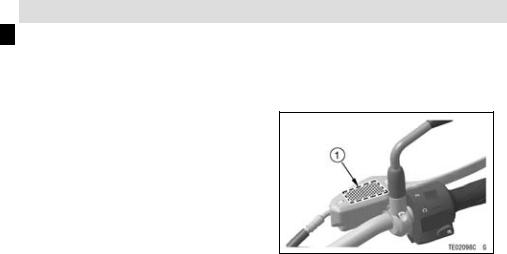
26 GENERAL INFORMATION
Location of Labels
All warning labels which are on your vehicle are repeated here. Read labels on your vehicle and understand them thoroughly. They contain information which is important for your safety and the safety of anyone else who may operate your vehicle. Therefore, it is very important that all warning labels be on your vehicle in the locations shown. If any label is missing, damaged, or worn, get a replacement from your Kawasaki dealer and install it in the correct position.
NOTE
○The sample warning labels in this section have part numbers to help
you and your dealer obtain the correct replacement.
○Refer to the actual vehicle label for model specific data grayed out in the illustration.
1. Brake Fluid (Front)
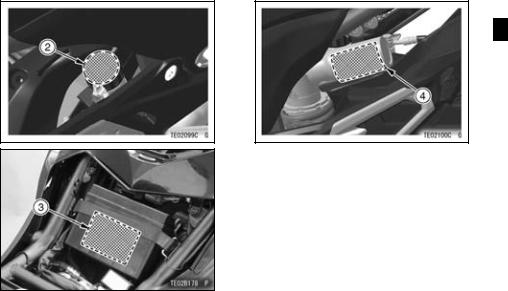
GENERAL INFORMATION 27
2.Brake Fluid (Rear)
3.Battery Poison/Danger
4.Rear Shock Absorber Warning
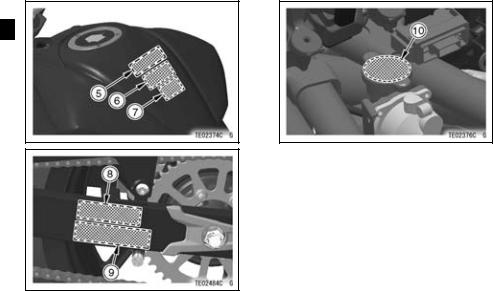
28 GENERAL INFORMATION
*5. Unleaded Gasoline **6. Fuel Level
***7. Helmet Warning
8. Tire and Load Data
9. Important Drive Chain Information
10. Radiator Cap Danger
*: Only on Australian model
**: Only on Southeast Asia B-1 model
***: Only on Thailand model
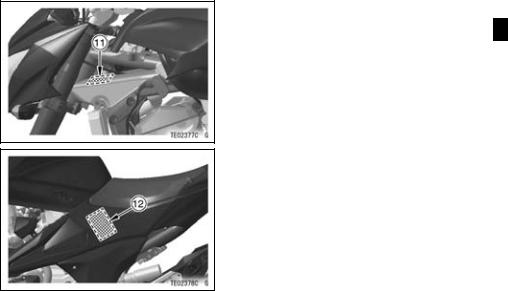
GENERAL INFORMATION 29
*11. Stationary Noise Test Information
****12. Vacuum Hose Routing Diagram
*: Only on Australian model
****: Only on Southeast Asia B-1 and Thailand models
